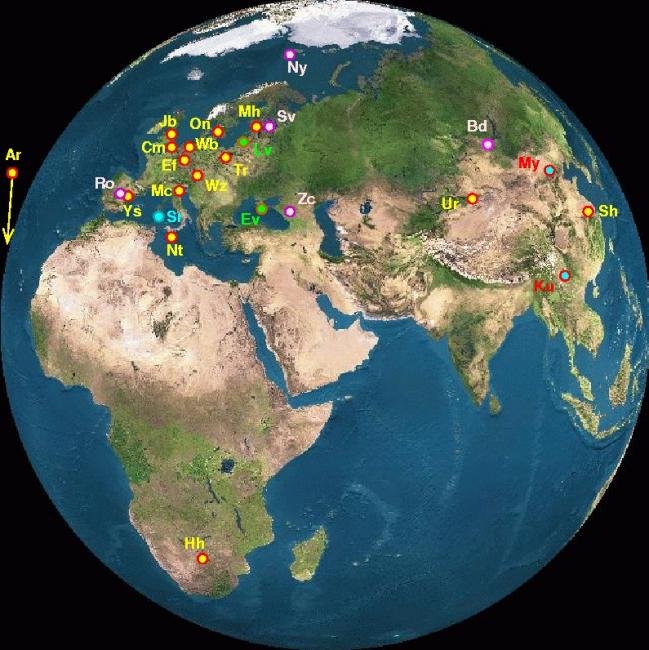The EVN is a distributed network of radio telescopes located across the European continent and beyond. EVN telescopes located within the EU and associated states include: Effelsberg (DE), Jodrell Bank and Cambridge (UK), Westerbork (NL), Onsala (SE), Medicina, Noto, and San Basilio (IT), Yebes (ES), Torun (PL), and Irbene (LV). When conducting EVN observations, the participating telescopes operate as a single entity. Signals from each telescope are combined together at a central processing facility at JIVE (Dwingeloo, NL) for correlation. There are additional EVN telescopes located in China (4), South Africa, and Puerto Rico. Joint observations with telescopes operated by NRAO (U.S.) are made on a regular basis.

The European VLBI Network (EVN) is a cooperative effort among institutes in nine EU countries, plus China, South Africa, and Puerto Rico. The EVN also often observes in conjunction with the U.S. Very Long Baseline Array (operated by NRAO), forming a global VLBI network (GVN). From its formation in 1980 as a consortium of 5 European observatories, the EVN has been in the vanguard of bringing about effective inter-operation among the European radio astronomy institutes. The stations in China and South Africa permit EVN baselines > ~ 8000 km, providing milliarcsecond (mas) resolution at cm wavelengths. GVN observations have significantly more baselines in the range of 6000-11000 km. EVN observations conducted in conjunction with the U.K. MERLIN array, introduce baselines as short as about 10 km, providing sensitivity to more extended emission on the order of arcseconds.
The correlator facility for the EVN, located at the Joint Institute for VLBI in Europe (JIVE), can correlate up to 16 telescopes, each recording data at up to 1 Gbps, and can compute a quarter-million complex lags. Flexibility in distributing correlator resources can satisfy various observational goals - from large-array, high-sensitivity, full-Stokes continuum mapping, to high spectral-resolution kinematic studies of astronomical maser emission. Velocity resolutions can exceed 0.1 km/s for OH-, methanol-, and water-maser emission lines. The current minimum integration time is 0.25s for a fully-loaded correlator. The combination of high spectral resolution and short integrations permits mapping over a wide field of view. A single correlator pass of an array comprising the European stations can often map fields the size of the primary beam of each participating telescope. Real-time e-VLBI is a new and still experimental development in which the data from the telescopes are sent to JIVE over high-speed fibre-optic links and stream directly into the correlator. The PI can have access to the correlated data within hours of the observation, a turn-around time typically several weeks shorter than in traditional VLBI experiments. Rapid progress in real-time e-VLBI over the past year-and-a-half, permits VLBI to be used as a dynamic instrument with which transient and flaring sources may be meaningfully studied at a resolution of a few milliarcseconds (mas).
View Larger Map | Contact:
Dr. R. Campbell
e-mail: campbell [at] jive [dot] nl
JIVE
Oude Hoogeveensedijk 4
7991 PD Dwingeloo
The Netherlands
website |


